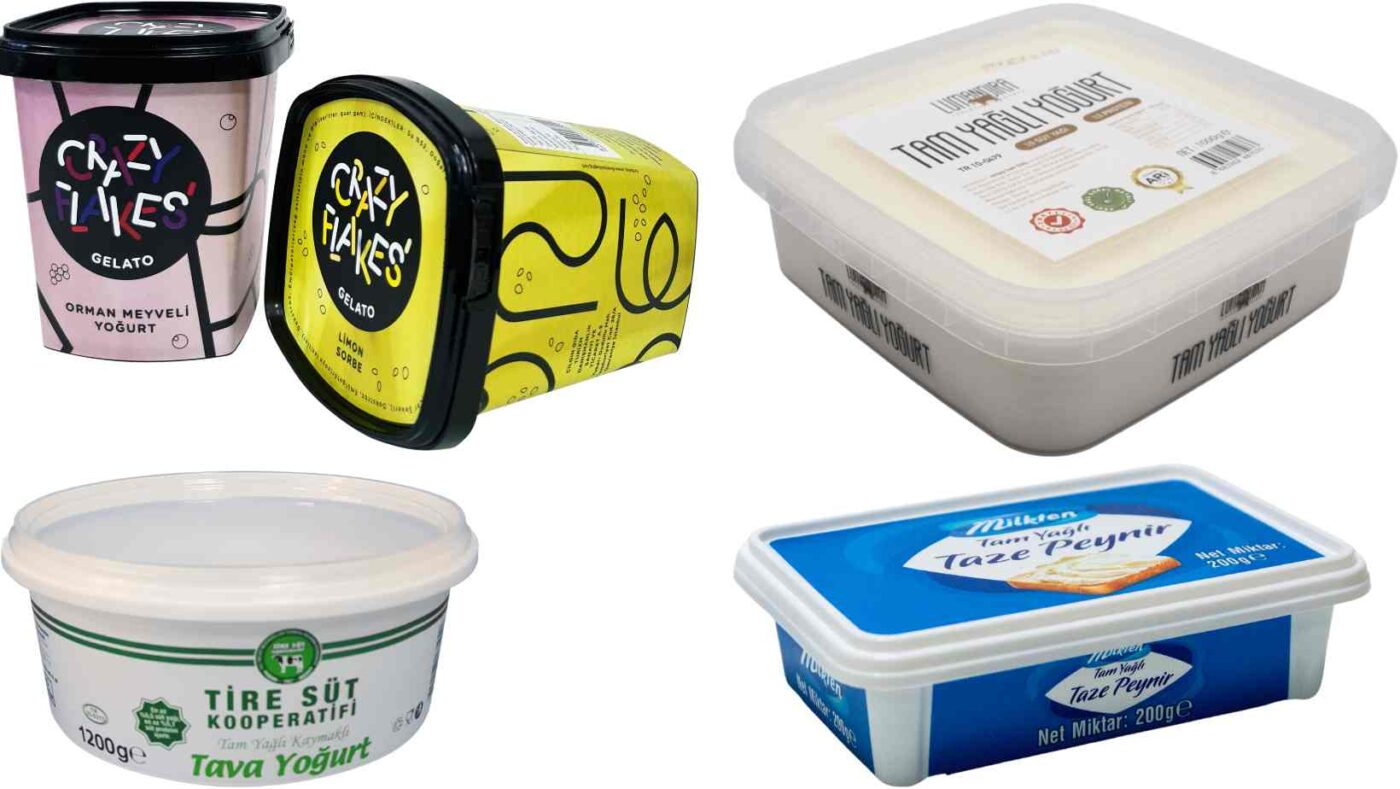Yogurt is a popular dairy product that has been consumed for centuries. It is known for its nutritional benefits, such as being high in protein, calcium, and probiotics. Today, yogurt comes in various forms, flavors, and packaging options. In this article, we will explore the different types of yogurt packaging, advancements in yogurt packaging technology, the role of plastic packaging in food safety, recycling and disposal of yogurt containers, and the future of sustainable in the food industry.
Table of Contents
Understanding Yogurt Packaging
Yogurt packaging is designed to protect the product from contamination and extend its shelf life. There are various types of packaging available, such as cups, bottles, pouches, and tubes. However, plastic packaging is the most common type of yogurt packaging due to its durability, flexibility, and cost-effectiveness.
Plastic containers provides several benefits for yogurt manufacturers. It is lightweight, which reduces transportation costs and carbon footprint. It also allows for branding and marketing opportunities through custom designs and labelings. Additionally, plastic packaging is easy to use and store, making it the preferred choice for consumers.
However, there are challenges faced by yogurt manufacturers in packaging their product. One of the main challenges is preventing leakage, as yogurt can be a messy product to handle. Another challenge is controlling the amount of oxygen that enters the package, as this can affect the quality and shelf life of the product.
Advancements in Yogurt Packaging
In recent years, there have been various trends and innovations in yogurt packaging technology. One of the trends is the use of sustainable solutions. Many yogurt manufacturers are transitioning towards using biodegradable or compostable materials to reduce their environmental impact. For example, some companies are using plant-based plastics made from renewable resources like cornstarch or sugar cane.
Another innovation in container design is the use of functional features that enhance the consumer experience. For instance, some yogurt cups come with an attached spoon or a separate compartment for mix-ins, such as granola or fruit. These features add value to the product and increase customer satisfaction.
Lastly, there have been advancements in yogurt packaging machinery and automation. This has allowed for faster production times, higher efficiency, and lower costs. Innovations in robotics and artificial intelligence have also enabled better quality control and reduced wastage.
The Role of Plastic Packaging in Food Safety
Plastic packaging plays a critical role in ensuring the safety and freshness of yogurt. It protects the product from contamination by bacteria, moisture, and light. As yogurt contains live cultures, it is especially important to prevent contamination as it can cause harm to human health.
The impact of plastic packaging on food quality and shelf life has been extensively studied. Plastic packaging can help to maintain the flavor, texture, and appearance of yogurt over a prolonged period. It also prevents oxidation, which can cause spoilage and off-flavors.
There are regulations in place for plastic pack in the food industry. For example, the US Food and Drug Administration (FDA) regulates the use of plastics that come into contact with food. Packaging manufacturers must meet certain standards for safety and quality before their products can be used in the food industry.
Recycling and Disposal of Yogurt Packaging
One of the biggest challenges with plastic packaging is its impact on the environment. Plastic waste can take hundreds of years to decompose and can harm wildlife and ecosystems. Therefore, it is important to recycle or dispose of plastic packaging properly.
There are various methods of recycling and disposal of yogurt packaging. Many local councils offer recycling services for household plastic waste. However, not all types of plastic are accepted for recycling, so it is important to check with your local council first.

Another option is to reuse or repurpose plastic packaging. For instance, yogurt cups can be used as plant pots, pencil holders, or storage containers. Some companies are also starting to implement closed-loop recycling systems, where they collect used packaging from consumers and recycle it into new products.
In addition to recycling, there are also efforts to develop more sustainable packaging solutions for the food industry. For example, some companies are experimenting with edible packaging made from natural materials like seaweed or starch. Others are exploring alternative options such as glass or metal.
FAQs
1. Is plastic packaging the only option for yogurt packaging?
– No, there are various types available, including glass, metal, and biodegradable materials.
2. What are the benefits of plastic packaging for yogurt manufacturers?
– Plastic packaging is lightweight, cost-effective, and allows for branding and marketing opportunities through custom designs and labelings.
3. How does plastic packaging protect yogurt from contamination?
– Plastic packaging prevents bacteria, moisture, and light from entering the package, which can cause spoilage and affect product quality.
4. How can consumers dispose of yogurt packaging responsibly?
– Consumers can recycle or repurpose plastic packaging, or opt for more sustainable packaging options.
5. What are some innovations in yogurt packaging design?
– Innovations in yogurt packaging design include functional features that enhance the consumer experience, such as attached spoons or separate compartments for mix-ins, as well as custom designs and labelings that allow for effective branding and marketing opportunities.
6. What are some sustainable packaging solutions for yogurt?
– Some sustainable packaging solutions for yogurt include biodegradable or compostable materials made from renewable resources such as cornstarch or sugar cane, as well as edible packaging made from natural materials like seaweed or starch.
7. Is there a way to recycle plastic yogurt cups that are not accepted by local recycling services?
– Some companies offer closed-loop recycling systems, where they collect used packaging from consumers and recycle it into new products. Alternatively, plastic yogurt cups can be repurposed or reused for other purposes.
8. How do regulations on plastic packaging in the food industry ensure safety and quality?
– Regulations on plastic packaging in the food industry ensure that packaging manufacturers meet certain standards for safety and quality before their products can be used in the food industry. This helps to ensure that the packaging does not contain harmful chemicals or contaminants that can affect human health.

